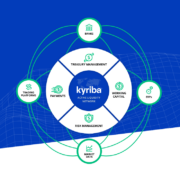Experts talk about a DIY Approach to Corporate Borrowing
| 07-11-2016 | Douwe Dijkstra, Lionel Pavey |

Last week we came across an article about DIY Corporate Borrowing (gtnews.com). The author stated that: “A do-it-yourself (DIY) credit application using publicly available information can help corporations better understand how they are seen by lenders and cuts the risk of financing not being available when it’s most needed.” We have asked our cash management experts Douwe Dijkstra and Lionel Pavey to give us their opinion on this approach.
 Douwe Dijkstra
Douwe Dijkstra
“I would like to react to the paragraph: “Services, such as cash management, trade finance and other fee-based services, require little or no equity for the bank to sell them and can appear to be much more profitable. From time to time a bank will instruct its sales force to push the products and services that require less capital and restrict sales of capital intensive ones such as loans.”
In my opinion banks nowadays already include exclusive provisions in their loan documentation for additional side business when providing finance to corporates. As a consequence you find yourself condemned to the cash management solution of a bank which is far from efficient for your purposes i.e. they do not have a presence in your area or one of the areas where you are active. The same is true for the “no further indebtedness” clauses in their loan documentation that prevents you, as a treasurer, selecting the best fitting financial product for your company. As an interim treasurer working for several private equity owned companies I am often faced with these restrictions. Regularly private equity companies have already signed the loan documentation without properly assessing side business terms in the contract. ”
 Lionel Pavey
Lionel Pavey
“Money is a commodity that is fungible – it is homogeneous and can be exchanged or replaced by a similar unit of currency and we would be indifferent to this change.
However, loan documentation is certainly not homogeneous – a quick scan through the documentation of different lenders will show different terms and conditions.
A DIY credit application therefore requires the existence of a standard set of documents. There are certain examples, such as the Loan Market Association, who do attempt to make standard documentation.
Up to now banks have traditionally been the suppliers of credit to companies, though there is no law or reason stating that they have the sole right to do this. To open up the loan market to third parties would require clearly defined documentation, along with criteria that must be met to engage with the market – detailed accounts that have been signed off and approved by independent auditors etc.
Lenders would have to submit their audited figures within an agreed timeframe so as not to be in default on their loans.
If such a market did come into existence and it was truly open to all contributors, it would also lead to fair greater transparency of the pricing policy that lenders use. The price of debt for each and every level of credit rating could be observed, together with implied premiums for country, industry etc. This is the opaque area where banks have a clear advantage – they have their own internal guidelines and pricing mechanics that no one else gets to see. The pricing should be more transparent – this would enable potential borrowers to have greater insight into price discovery which is a cause of concern for many funding issues as, for many companies, it is difficult to passively see what the potential price of debt for them would be.
An opening up of any financial market should be welcomed and make it easier for other potential lenders to see what risks the rest of the market are prepared to accept and also price changes. This would then allow companies to better manage their external relationships – they can separate their loan relationships from their core banking relationships.”









